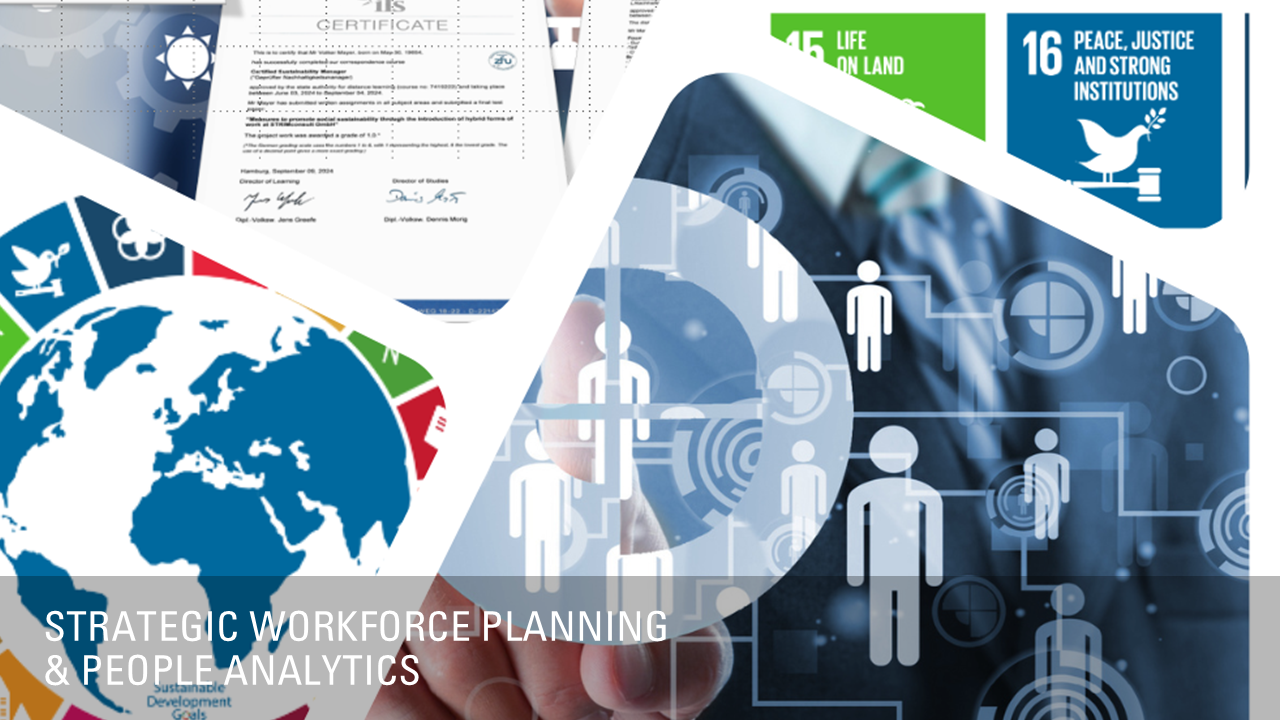Strategic workforce planning and people analytics are essential tools for optimizing the entire employee life cycle based on data-driven decisions.
Key topics in strategic workforce planning, such as
- developing models and scenarios that predict future workforce requirements and ensure that the right skills are available at the right time,
- building internal and external talent pipelines to fill key positions in a future-proof manner,
- identifying and developing core skills that are crucial for future strategic requirements,
- continuous training and development programs – reskilling and upskilling – to enable employees to transition to new roles,
and people analytics, such as
- gathering and analyzing data on employee satisfaction and retention,
- using analytics to identify and promote high-performing teams,
- analysing demographic data to promote a diverse and inclusive workforce,
- developing models that predict employee attrition and suggest countermeasures,
- useing analytics for optimized recruitment and selection of new employees,
are therefore already standard practice in numerous companies.
What does the statement “sustainability begins with people” mean?
The connection between sustainability permeates strategic workforce planning and people analytics in many ways:
- Sustainability means that companies build a diverse, fair and inclusive workforce. The social component in ESG focuses on employee well-being and fair working conditions, which can be precisely managed and measured through people analytics.
- Strategic planning takes into account the ethical treatment of employees, fair wages, development opportunities and work-life balance, which is part of social sustainability.
- Sustainability can help identify and develop the skills needed to meet future social and environmental challenges. This can be realized through targeted upskilling and reskilling programs.
- A strong focus on sustainability strengthens employer branding, which in turn can be measured using people analytics; e.g. through employee satisfaction surveys and through metrics and indicators on fluctuation and employee retention.
- Sustainability integrates programs to promote the well-being and health of employees, supported by analytical insights to improve physical and mental working conditions.
This is nothing less than our aim when we address strategic workforce planning and people analytics in companies.
The following aspects are essential:
- We consistently link sustainability aspects to strategic workforce planning and people analytics. By combining ESG standards with relevant (HR) processes, e.g. through a Sustainability Balanced Scorecard (SBSC), we create added value that goes beyond a purely economic focus.
- We deeply embed sustainability into workforce and talent strategies by aligning with the Sustainable Development Goals (SDGs) and CSRD/ESRS standards. We even go one step further and incorporate the still non-binding IFRS standards to keep integrated reporting in mind from the start! This enables a comprehensive sustainable transformation.
- Our favored HR Flex Value Strategy, which we have implemented in our own company, stands out from rigid, traditional workforce planning approaches by prioritizing flexibility, resilience and sustainability. Such a strategy can be invaluable, especially in times of crisis and change.
- We combine HR and digital transformation with sustainability, for example, through “green” digital solutions and the reduction of the carbon footprint in HR management.
In this way, we take strategic workforce planning and people analytics to the next sustainability level.

